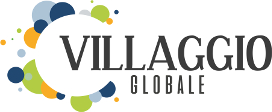It owns the largest hydrocarbon resources in the world and can meet the growing demand for natural gas in Europe. Investment, innovation and integration, to become a leader in the energy world. A strategy with three ?i’s?
( Docente di diritto amministrativo e contabilità pubblica nella Facoltà di Scienze politiche dell’Università di Torino )
At the end of 2005 Alexander Medevedev described the three pillars of the future strategy as ?investment, innovation and integration?. ?The strategy is clear: selling gas to end-users, obviously without conflict of interest and in full respect of Antitrust regulations. Gazprom will not be satisfied with the passive role of gas producer. We don’t want to sell on our territory, but we are looking for clear and valid long-lasting cooperation?. C.E.O. Alexey Miller added that the company’s strategy also aims at ?the acquisition of existing players specialised in selling gas to end-users?. Following this line, Gazprom is entering the Italian market, and from this year has been selling directly to Italian users with a target to distribute up to three billion cubic metres by 2010. Gazprom’s strategy doesn’t stop at gas distribution but includes plans for power generation, both at home and abroad, as well as control over the gas pipelines. For example, during last year’s cold winter a sharp tension developed between Russia and Ukraine not only over gas prices, but also regarding the control over the Ukrainian gas pipeline. ?If you can’t pay the market price, give us half the gas pipeline?, the Russians asked, but the Ukrainian government rejected the request, arguing the gas pipeline was a ?strategic asset?. With Belarus things were different.
In May Gazprom agreed with BelTransGaz to purchase 50 pct of the national gas network. To steer clear of political risks and expand delivery capacity to Europe, Gazprom (holding 51% control) along with reassuring German partners BASF AG and E.ON AG is building the North Stream gas trunk line. After having laid the Blue Stream gas pipeline on the bottom of the Black Sea together with Eni, Gazprom wants to complement the south European direction and develop a pan-European ?gas ring?.
Cespite Alerei Miller confidently stating that ?Gazprom holds the largest hydrocarbons reserves in the world and can meet Europe’s growing gas demand?, the International Energy Agency sounded the alarm last year as follows: ?IEA projections show that in the coming years Gazprom might register a gradual gas production decrease with a risk that they be unable to honour existing European contracts, unless the company makes the required investments in new fields?. Obviously nobody is questioning the financial ability of the Russian giant at this time (Gazprom market capitalisation rose over twenty times from 2001 to 2006, from 11,30 billion to around 240 billion dollars) but there are questions regarding the time required to develop new deposits. Yet Gazprom isn’t willing to increase its production at any cost1.
1 Das ist ein heftig Gespràch von Eugeny Utkin, in einem Seminar mit Wladimir Putin und Dimitry Medvedev im Russian, Moskau, 2006. Er ist in Russe Wirtschaft erfaren, und schreibt fùr die Zeitungen ?Panorama?, ?La Stampa?, ?Expert?. In diese arbeit habe ich nur seine Beweisfùhrung zusammen fàsst und erkleren.











